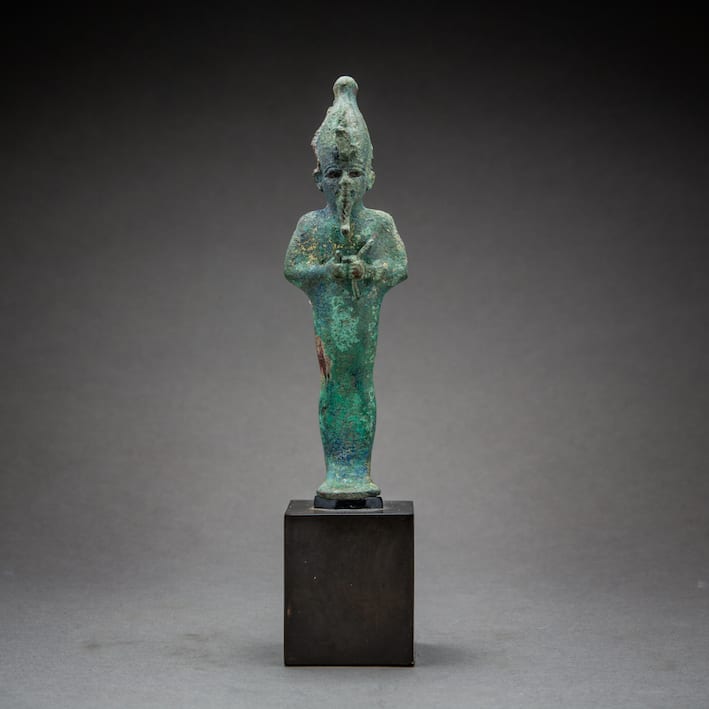Egyptian Bronze Sculpture of Osiris, 1000 BCE - 600 BCE
Bronze
17.3 x 5.1 cm
6 3/4 x 2 in
6 3/4 x 2 in
LO.1368
Further images
Osiris (Greek language, also Usiris; the Egyptian language name is variously transliterated Asar, Aser, Ausar, Wesir, or Ausare) is the Egyptian god of life, death, and fertility. He is one...
Osiris (Greek language, also Usiris; the Egyptian language name is variously transliterated Asar, Aser, Ausar, Wesir, or Ausare) is the Egyptian god of life, death, and fertility. He is one of the oldest Gods for whom records have survived and first appears in the pyramid texts around 2400 BC, when his cult is already well established. He was widely worshipped until the forceable suppression of paganism in the Christian era.[1][2] Osiris was not only the redeemer and merciful judge of the dead in the afterlife, but also the underworld agency that granted all life, including sprouting vegetation and the fertile flooding of the Nile River. The Kings of Egypt were associated with Osiris in death such that as Osiris rose from the dead so would they, in union with him, inherit eternal life through a process of imitative magic. By the New Kingdom all men, not just pharaohs, were believed to be associated with Osiris at death if they incurred the costs of the assimilation rituals.[3] Osiris is the oldest son of the Earth god, Geb, and the sky goddess, Nut as well as being brother and husband of Isis, with Horus being considered his posthumously begotten son. He is usually depicted as a green-skinned pharaoh wearing the Atef crown, a form of the white crown of upper Egypt with a plume of feathers to either side. Typically he is also depicted holding the crook and flail which signify divine authority in Egyptian kings, but which were originally unique to Osiris and his own origin-gods (see below), and his feet and lower body are wrapped, as though already partly mummified. The information we have on the myths of Osiris is derived from allusions contained in the pyramid texts, and, much later, in narrative style from the writings of Plutarch[4] and Diodorus







